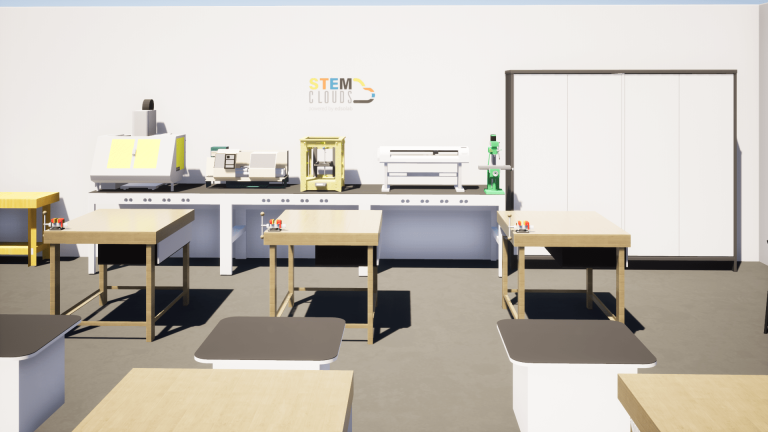Design and Technology Lab
There are four key aspects to design and technology activities:
- Researching
- Designing
- Planning and making
- Testing and evaluating

Design and technology is essentially a practical subject. It involves pupils in researching, designing, testing and evaluating products as well as in making them. Pupils undertake various activities: product analysis; focused practical tasks that develop a range of techniques, skills and knowledge; and design and-make assignments in different contexts. Computers are used extensively for researching, designing and testing products, and for presenting ideas.
Products are made in a wide range of materials, including wood, metal, plastics and textiles (often in combination), as well as food.
Researching
Researching involves pupils both in independent investigative activities and direct teaching. Pupils carry out research individually, in small groups, or as a whole class (often using an interactive whiteboard). Activities include whole class presentation and discussion, researching on the Internet, reading, writing, sketching and analyzing existing products.
Designing
Pupils develop their ideas in a variety of ways, which may include sketching, computer graphics, and making and experimenting with materials and models. They discuss and analyse their ideas as they progress, and record them to form part of a ‘story’ of how their product develops.
Planning and making
Pupils develop their ideas in a variety of ways, which may include sketching, computer graphics, and making and experimenting with materials and models. They discuss and analyse their ideas as they progress, and record them to form part of a ‘story’ of how their product develops.
Testing and evaluating
Pupils test and evaluate their products as they progress, and adjust their designs as needed. This may involve practical work, such as applying a load to a product to test its strength, using computers to analyse performance and log data, or seeking the views of peers and teachers through discussion and presentation in small or whole-class groups.
